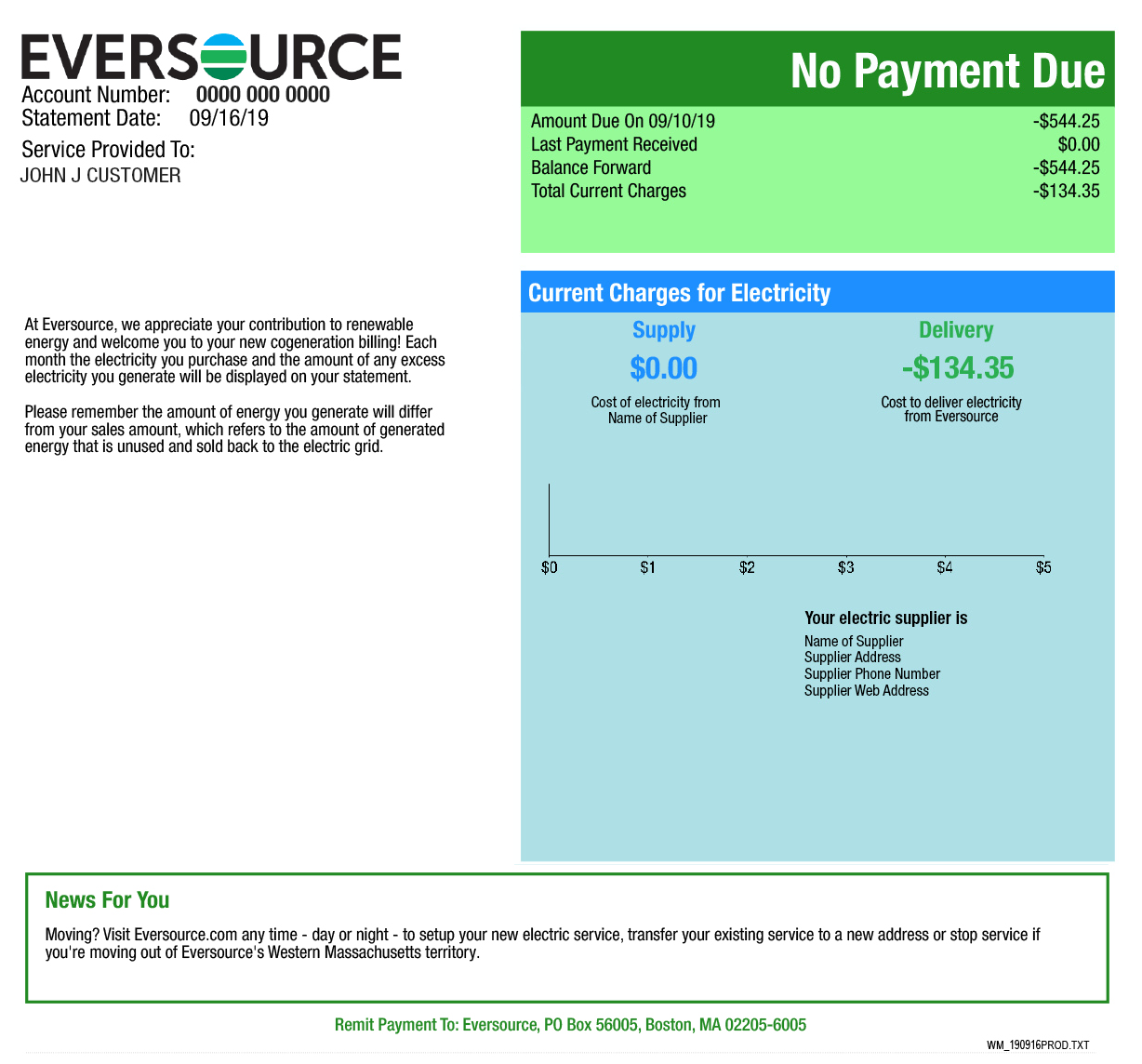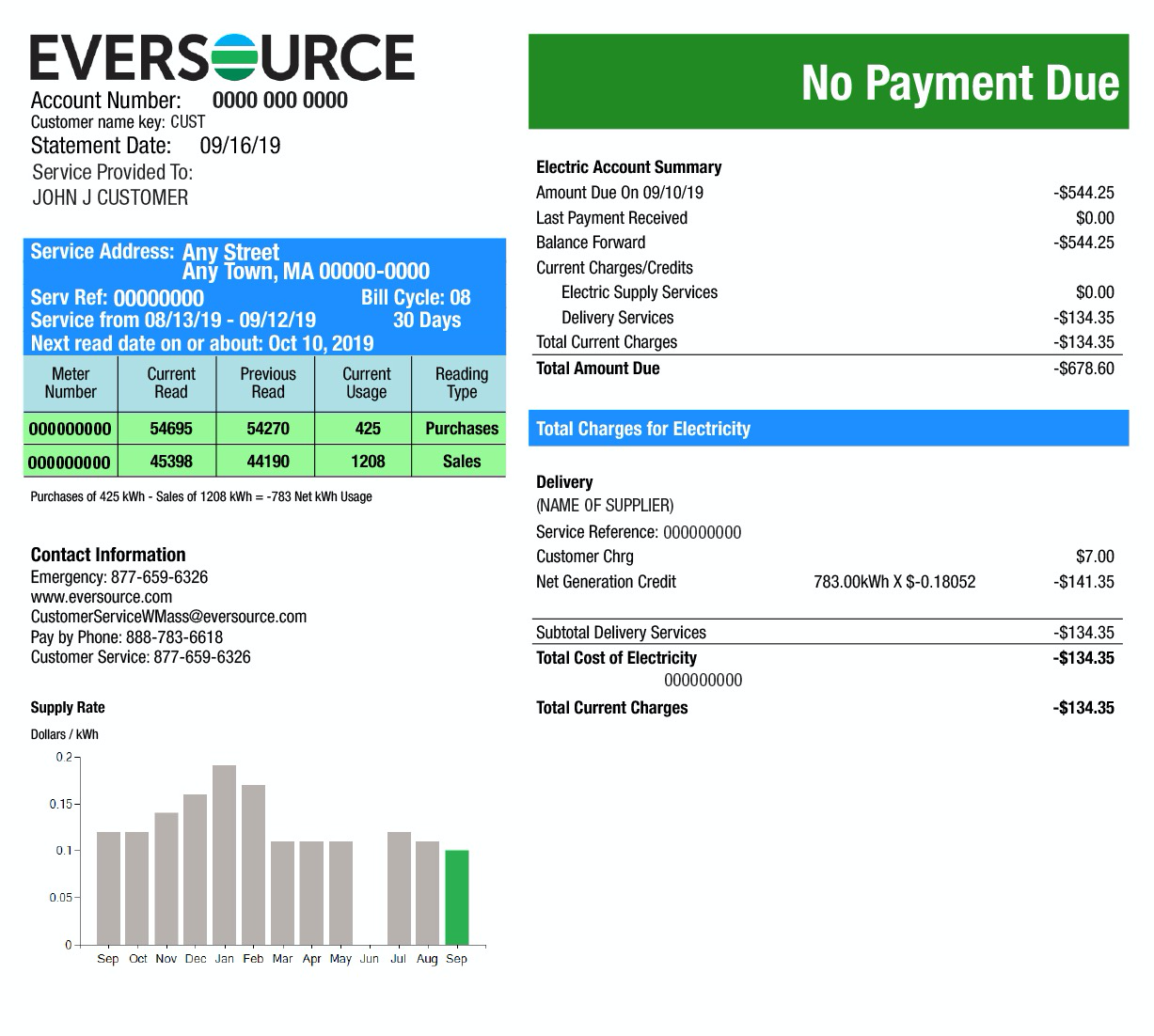So: you install solar and you’re on your way to a reduced electricity bill – congrats! That’s a huge step financially and environmentally. But now your electric bill with solar is looking a little bit different and you’re confused. No big deal – there’s just a few things to remember.
Solar can reduce or eliminate your electricity costs, but you still have an electric bill with solar panels, even if you don’t owe anything. This is because when you install solar your panels are tied to the electric grid, allowing you to pull electricity from this grid when your panels are just not producing enough energy.
In exchange, it allows you to send any excess energy your system has back to the grid for a credit. This is called Net Metering. Plus, if you utilize battery storage like the Generac PWRcell, you can store the excess energy on your own for your system to use later!
Net Metering After You Install Solar
As I said earlier, any excess energy generated from your system will pass through what is called a “meter” back to the grid, thus making your meter spin backwards. This meter will be installed at your home and your utility company should read the meter regularly. The net meter replaces the normal meter on the house. The utility swaps this out at the end of the installation process. The original meter that is on every house only spins forwards, so the utility needs to put in the meter so that it can record when power is being sent back to the grid.
Every month you’ll be sent a bill showing the net value of your usage. The net value is the amount of energy you purchase from the grid subtracted by the amount of energy you sell back to the grid.
Now that you understand net metering, let’s show an example of an Eversource bill after they installed solar in Massachusetts:
The main difference you’ll notice with your electric bill after you install solar panels is the much lower bill you owe. Obviously, it’s quite exciting to see the “No Payment Due” up top. But it’s still important to know the individual parts to the equation after you install solar.
As you can see, there are three separate parts on the first page: the Payment Due Summary, the Supply Charge, and Delivery Charge. While the supply charge will be zero in months when your system produces more electricity than you use, all customers will receive a delivery charge that covers the cost to read meters and provide that bill.
However, if you have net metering credits then that delivery charge will actually be deducted from the credit! Lastly, the Payment Due Summary is the negative dollar value for the total current charges. This means your energy system is producing more electricity than you used this month! The “Balance Forward” amount is from the previous month. And even if you have a balance to pay don’t forget that much of your power for the month came from your panels at no additional cost. In short, even if you don’t zero out your bill you’ve knocked it down a bunch and reduced your carbon footprint.
Moving on to the second page of the Eversource Bill you’ll see this:
Again, the Payment Due Summary is the box that shows the summary of all your charges. According to Eversource, the Current Usage is the table that “shows the amount of energy you use/purchase from the grid which is subtracted from the amount of energy you send/sell back to the grid. Purchase – sales = net usage. A negative number means you had excess generation for the month and will be used to determine your net metering amount.”
Plus, we have another Delivery Charge, but instead it’s called the Customer Delivery Charge. All customers get this charge that covers the utilities cost to read meters and generate bills. This charge is applied no matter the amount of solar production or usage, but as I said earlier net metering credit earned can also be applied.
Finally, there’s the Net Generation Credit. If your system produces more electricity in a month than you use, a credit will appear on the “net generation credit” line. According to Eversource, “this amount is calculated by multiplying your net usage by the net metering credit value. You won’t see this line in months where your system produces less energy than you use.”
Note: If you live in an area with a different utility your bill may look considerably different, but most of the same concepts outlined above remain the same. The only exception to that basic rule is for some folks in RI. Depending on which incentive program they picked they may have something similar too, but procedurally different from Net Metering. In short, they have two meters, one for all the power they produce (and send to the grid) and another for all the power they use.
Want your electric bill to look like this? Head to our website for an instant estimate!







No comments yet. You should be kind and add one!
The comments are closed.